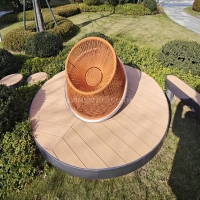Welcome to the website for landscape facilities products and knowledge.
What are the design considerations for landscape tables in wildlife or nature reserves?
Landscape tables in wildlife or nature reserves serve as functional yet unobtrusive elements that enhance visitor experience while preserving the natural environment. Key design considerations include:
1. Material Selection: Opt for eco-friendly, durable materials like recycled plastic, sustainably sourced wood, or rust-resistant metals to minimize environmental impact and ensure longevity.
2. Minimalist Design: Tables should blend seamlessly with the surroundings, avoiding bright colors or bulky structures that disrupt the natural aesthetic.
3. Wildlife Safety: Avoid sharp edges or toxic finishes that could harm animals. Elevated or anchored designs prevent soil compaction and root damage.
4. Visitor Accessibility: Place tables in designated areas with clear pathways to avoid disturbing habitats, ensuring they are accessible to all visitors, including those with disabilities.
5. Low Maintenance: Choose materials resistant to weathering, vandalism, and pests to reduce upkeep and preserve the reserve’s pristine condition.
By prioritizing sustainability, functionality, and harmony with nature, landscape tables can enhance reserves without compromising ecological integrity.
Related search:

Recommendation
Swivel chair-Specialty steel structure woven rattan leisure chair with rotatable design